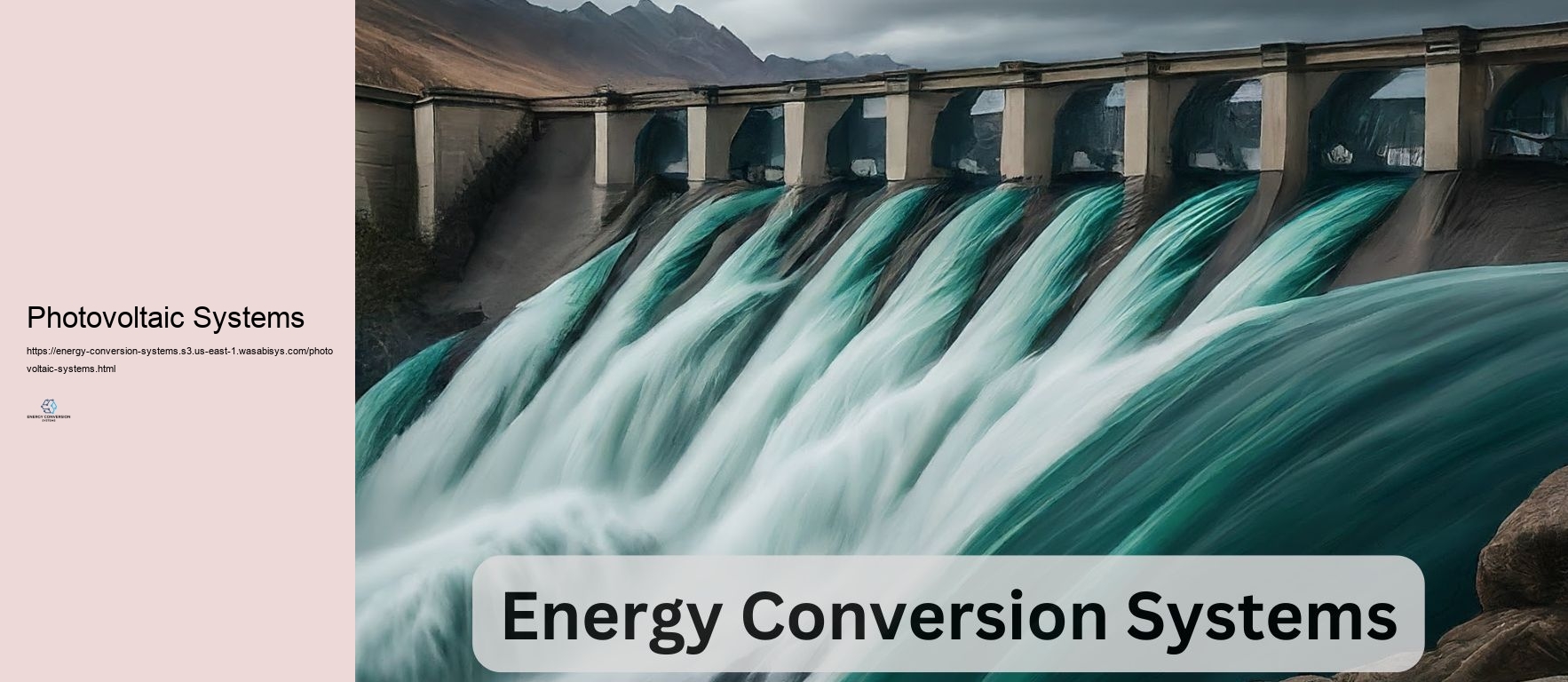

Energy conversion systems play a vital feature in modern-day culture, enabling the adjustment of various types of energy right into more useful and useful kinds. These systems are essential to power generation, transport, business processes, and day-to-day developments. Comprehending the concepts and applications of energy conversion systems is essential for developers, policymakers, and anybody curious about the area of energy. At its core, energy conversion is governed by the regulations of thermodynamics. The very initially legislation of thermodynamics, which specifies that energy can not be produced or damaged yet simply transformed from one type to an additional, is the foundation of all energy conversion systems. The 2nd law presents the concept of degeneration and efficiency, clearing up why no energy conversion process can be 100% effective. These fundamental principles underpin the design and treatment of all energy conversion systems. Among one of the most usual and substantial energy conversion systems is the thermal nuclear power plant. These centers change the chemical energy kept in nonrenewable fuel sources (such as coal, oil, or gas) or nuclear fuel right into electric energy. The treatment usually involves melting the gas to warmth water, creating steam that drives a turbine affixed to a generator. This system, based upon the Rankine cycle, is an archetype of converting thermal energy to mechanical energy and afterwards to electric energy. Modern thermal power plants utilize countless methods to improve efficiency, such as supercritical vapor conditions and combined cycle systems. Renewable energy systems stand for another important category of energy conversion. Microturbines Solar photovoltaic (PV) panels transform light energy straight right into electric energy with the photoelectric effect. Wind wind generators transform the kinetic energy of transferring air right into mechanical energy and then right into electric power. Hydroelectric power plants harness the possible energy of water saved at height, transforming it to mechanical energy through generators and after that to electric energy. Each of these systems has its distinct concepts and troubles, nevertheless all please of changing naturally occurring energy right into even more useful forms. Inner shedding engines, typically made use of in transport and some power generation applications, transform the chemical energy in gas into power through controlled rises. These engines, whether gas or diesel, run thermodynamic cycles (such as the Otto cycle or Diesel cycle) that include compression, burning, growth, and exhaust phases. The efficiency of these engines has really been continuously increased with developments in materials, gas shot systems, and exhaust gas therapy innovations. Gas cells represent a cutting-edge energy conversion system that straight converts chemical energy right into electric energy without melting. These tools usage electrochemical responses to produce electric power, with hydrogen being an usual fuel. Gas cells have applications ranging from mobile power sources to huge fixed power generation, and they offer the possible for high effectiveness and reduced tires. Heatpump and refrigeration systems are energy conversion systems that relocate warmth from one place to one more, efficiently converting electrical energy right into thermal energy transfer. These systems, which operate the vapor compression cycle or absorption cycle, are extensively utilized for home heating, air conditioning, and refrigeration in family, service, and commercial settings. The performance of heat pumps is often shared as a coefficient of performance (POLICE OFFICER), which can be higher than one, as they transfer cozy instead of create it directly. Electrochemical energy conversion systems, such as batteries and supercapacitors, play a crucial function in energy storage and mobile power applications. Photovoltaic Systems These tools transform chemical energy right into electrical energy (throughout discharge) and vice versa (during invoicing). The principles of electrochemistry regulate their procedure, with recurring research study concentrating on increasing energy thickness, power density, and cycle life. Thermoelectric gizmos represent a distinctive kind of energy conversion, directly changing temperature distinctions right into electric energy (Seebeck result) or making use of electrical energy to produce a temperature level difference (Peltier result). While presently limited in effectiveness, these solid-state gadgets have applications in waste warm healing, cooling down systems, and room exploration. Magnetohydrodynamic (MHD) generators are an advanced energy conversion system that directly converts thermal energy into electrical energy without moving elements. By passing a high-temperature, electrically conductive liquid via an electromagnetic field, these systems generate electric power. While still mainly experimental, MHD generators hold promise for high-temperature, high-efficiency power generation. The application of energy conversion systems lengthens throughout different fields. In the power generation field, large thermal, nuclear, and renewable resource systems give electrical power to the grid. In transportation, internal burning engines, electrical motors, and emerging innovations like fuel cells power lorries. Industrial procedures depend on a big variety of energy conversion systems for heating, air conditioning, and powering tools. In the home and organization markets, air conditioning and heating systems, illumination, and home appliances all involve energy conversion. Performance improvement is a continuous focus in the growth of energy conversion systems. This consists of not only boosting the performance of details parts yet also taking full advantage of entire systems and incorporating various modern technologies. For example, incorporated warmth and power (CHP) systems improve total energy use by videotaping waste heat from electrical power generation for home heating or business procedures. The eco-friendly effect of energy conversion systems is a significantly crucial element to think about. Numerous initiatives are concentrated on lowering discharges from fossil fuel-based systems, boosting the efficiency and reliability of renewable energy systems, and creating brand-new, cleaner developments. The concept of life cycle analysis is critical in assessing truth ecological influence of various energy conversion systems, thinking about variables such as source removal, manufacturing, procedure, and disposal. Energy conversion systems are fundamental to contemporary world, allowing the application of various energy resources to satisfy human requirements. From massive power generation to specific digital devices, these systems are ubiquitous in our every day lives. As contemporary innovation advancements and ecological problems broaden, the area of energy conversion continues to be to progression, with repeating {research and development aimed at enhancing effectiveness, lowering ecological effect, and taking advantage of brand-new energy sources. Identifying the principles and applications of these systems is essential for resolving the energy barriers of the future and relocating towards an extra lasting energy landscape.
Energy conversion modern technologies go to the leading edge of transforming exactly just how we harness and make use of energy, playing a vital role in the shift in the direction of lasting and trustworthy energy systems. From photovoltaics to fuel cells, these innovations include a varied choice of mechanisms that convert natural energy resources right into functional types, such as electric energy, warmth, and gas. Each modern innovation runs distinctive concepts and is matched to details applications, using unique advantages and difficulties. Power Electronics Comprehending these technologies is vital for advancing energy solutions that take care of globally energy demands while decreasing environmental effect. Photovoltaics (PV) stand for among one of the most commonly acknowledged forms of solar power conversion. These systems use semiconductor materials, generally silicon, to change sunshine straight right into electric energy using the solar result. When sunlight strikes the surface of a PV cell, it thrills electrons, creating an electrical current. Solar modern innovation has actually sophisticated dramatically throughout the years, with developments in materials and design bring about boosted performance and lowered expenses. Emerging innovations, such as thin-film solar cells and organic photovoltaics, are pressing the limits of effectiveness and adaptability, making solar power a great deal even more available and versatile to many applications, from domestic rooftops to substantial solar farms. Concentrated solar power (CSP) is an extra solar energy conversion technology that differs from photovoltaics by utilizing mirrors or lenses to concentrate sunshine onto a small location, generally a receiver. The concentrated light is exchanged heat, which is then taken advantage of to produce steam that drives a turbine connected to an electrical generator. CSP systems are especially effective in regions with high right sunlight and can integrate thermal energy storage solutions to offer power additionally when the sun is not beaming. This ability to conserve energy as warm permits CSP plants to offer a a lot more consistent and reliable power output contrasted to standard solar PV systems. Fuel cells are an adaptable energy conversion modern-day technology that creates electric power via an electrochemical reaction, generally including hydrogen and oxygen. Unlike combustion-based power generation, gas cells produce electricity without melting gas, leading to lower wears down and higher efficiency. There are various type of gas cells, each identified by the electrolyte used and the operating temperature level variety. Polymer electrolyte membrane layer (PEM) gas cells, for instance, are recognized for their high power thickness and are frequently used in transport applications, such as fuel cell lorries. Strong oxide fuel cells (SOFCs), on the various other hand, run at greater temperature level degrees and appropriate for fixed power generation and industrial applications. Hydroelectric power is a reputable energy conversion innovation that uses the kinetic energy of flowing water to create electrical power. By directing water via generators, hydroelectric plants change the energy of relocating water right into mechanical energy, which is after that transformed right into electric energy by generators. This technology is extremely effective and can give a normal and reliable power supply, making it a keystone of renewable energy profiles in great deals of countries. Nevertheless, the eco-friendly influence of huge hydroelectric tasks, such as setting disruption and adjustments to water environments, needs cautious prep work and administration. Wind energy conversion innovations catch the kinetic energy of wind making use of wind turbines, which transform it right into power and subsequently right into electric power. Wind generators are generally set up in locations with strong and consistent wind patterns, such as seaside locations and open levels. Advancements in wind generator style, such as bigger blades sizes and taller towers, have actually significantly improved the performance and capacity of wind power generation. Offshore wind farms are also gaining grip, utilizing the possibility for considerable energy generation with marginal land usage impact. Geothermal energy conversion taps into the Planet internal warm to create power and give straight heating applications. Geothermal power plants usage vapor or warm water from below ground storage tanks to drive wind generators and generate electrical energy. This advancement is really effective and can give a constant power supply, as geothermal resources are exempt to the irregularity seen in solar and wind energy. On top of that, geothermal systems can be used for straight home heating applications, such as area home heating and greenhouse farming, a lot more increasing their benefit. Biomass energy conversion includes using organic items, such as plant and pet waste, to generate warm, electrical energy, or biofuels. Biomass can be exchanged energy by means of various treatments, consisting of shedding, gasification, and anaerobic digestion. This innovation usages the advantage of making use of waste materials and can contribute to discard management remedies. However, the sustainability of biomass energy relies on the source of the biomass and the techniques made use of for expanding and harvesting. Tidal and wave energy conversion modern-day innovations harness the energy of ocean tides and waves to produce electric power. Tidal power plants typically use barrages or underwater wind generators to catch the energy of relocating water, while wave energy converters draw out energy from the area activity of waves. These modern innovations are still in the creating stages yet hold assurance for providing a trusted and foreseeable resource of renewable energy, particularly for seaside regions. The landscape of energy conversion modern innovations is diverse and swiftly evolving, driven by the demand for lasting and reliable energy solutions. From photovoltaics and concentrated solar energy to gas cells and hydroelectric systems, each technology deals one-of-a-kind advantages and difficulties. By proceeding these modern-day innovations and including them right into the worldwide energy system, we can relocate towards a a lot more sustainable and resilient energy future, reducing our reliance on nonrenewable gas sources and decreasing environmental influence. As {research and development remain to press the boundaries of what is viable, the possible for advanced energy conversion solutions to adjustment our energy landscape continues to be large and promising.
Energy conversion systems are essential to modern society, playing a crucial duty in transforming raw energy sources right into useful power that fuels homes, sectors, and transport. These systems include a vast array of advancements and treatments produced to change energy from one type to an added, such as transforming chemical energy in gas to power in engines or electrical energy in nuclear power plant. A thorough assessment of the important aspects in energy conversion systems discloses the complexity and elegance connected with successfully making use of and utilizing energy sources. Understanding these aspects is crucial for improving performance, increasing performance, and decreasing ecological impact. The beginning factor of any type of kind of energy conversion system is the energy resource, which can be lasting or non-renewable. Renewable energy resources consist of solar, wind, hydroelectric, geothermal, and biomass, while non-renewable resources incorporate nonrenewable fuel sources like coal, oil, and gas, in addition to atomic energy. The choice of energy resource dramatically influences the design and procedure of the conversion system, as each resource has special functions, such as schedule, energy density, and eco-friendly influence. As an example, solar power systems trust solar batteries or solar thermal fanatics to catch sunlight, while fossil fuel-based systems use burning processes to launch energy maintained in chemical bonds. At the heart of any kind of type of energy conversion system is the energy conversion tool, which adjustments the main energy source right into a different type of energy. Normal conversion gadgets consist of wind turbines, engines, generators, and gas cells. Wind turbines, utilized in both nonrenewable fuel resource and renewable resource systems, convert kinetic energy from hefty vapor, water, or wind into power, which is after that changed right into electrical energy by generators. Inside melting engines, common in transportation, transform chemical energy from fuels right into power via managed explosions. Gas cells, on the various other hand, straight transform chemical energy from hydrogen or various other fuels right into electrical energy via electrochemical responses, supplying high efficiency and reduced discharges. Heat exchangers are essential components in great deals of energy conversion systems, particularly those including thermal treatments.
Discover the latest advancements in energy conversion systems, from solar and wind to fuel cells and biomass! Learn how these innovations are driving sustainable energy solutions for a cleaner, more efficient future.https://t.co/9SfMjPHIu9
— Turbine Training And Operation (@turbinetraine) August 25, 2024
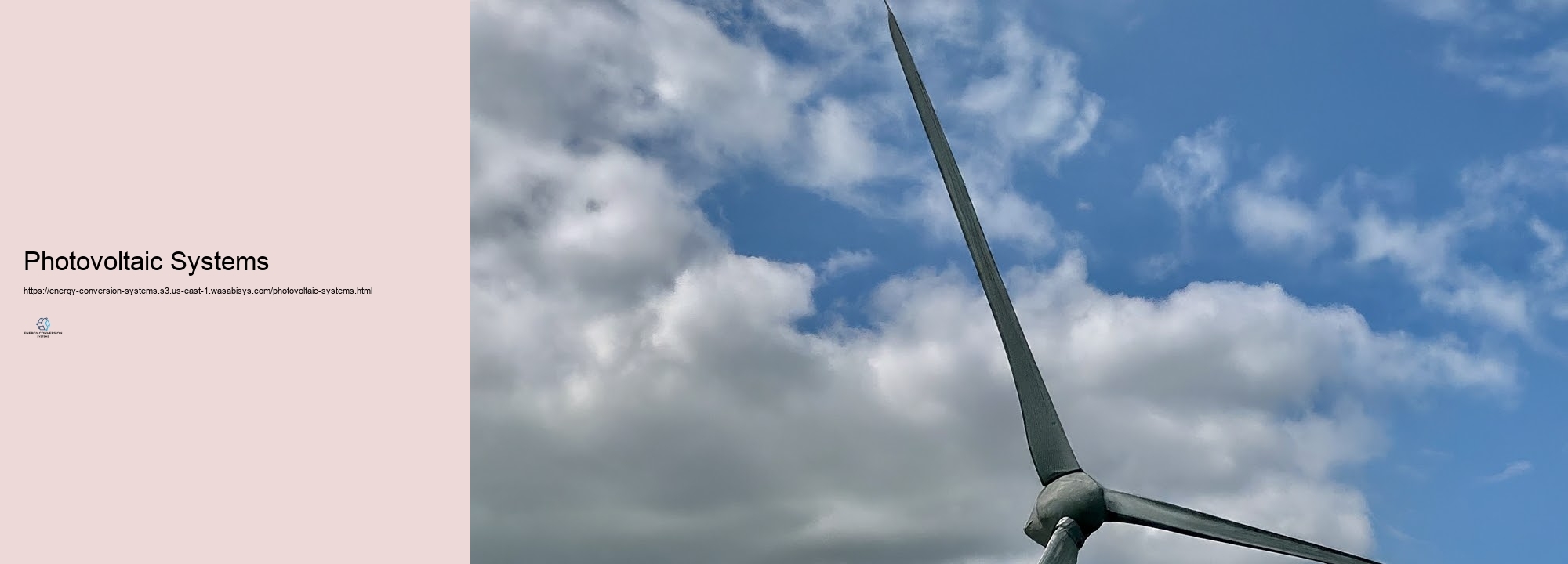
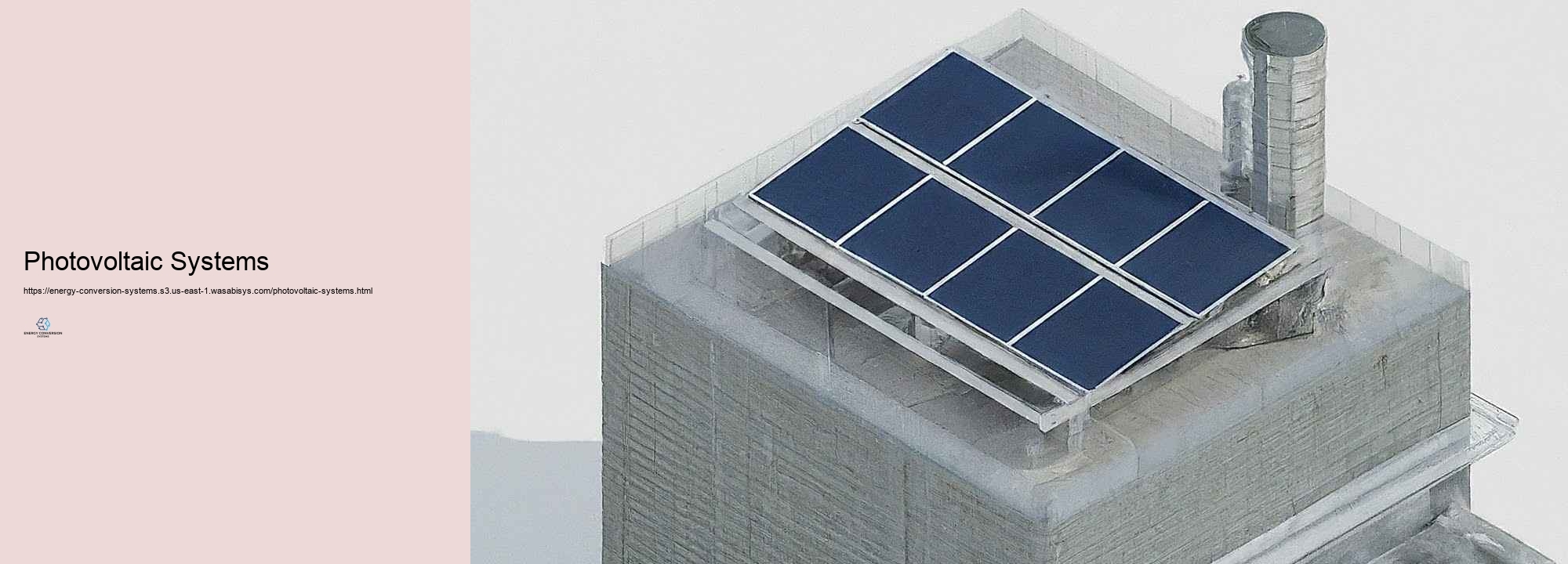
Improving effectiveness in energy conversion is a necessary unbiased in the pursuit of lasting and cost-effective energy manufacturing. As around the world energy need remains to rise, enhancing the effectiveness of energy conversion processes has ended up being gradually important for reducing resource intake, lowering eco-friendly effects, and making sure energy safety and protection. This endeavor includes a vast array of methods and improvements throughout numerous energy markets, from standard fossil fuel-based systems to renewable resource advancements. Among the key locations of focus for boosting energy conversion performance is in thermal nuclear power plant, which remain to be a substantial resource of electric power worldwide. Advanced burning modern innovations, such as supercritical and ultra-supercritical vapor cycles, have been developed to boost the performance of coal-fired power plants. These systems run at higher temperature levels and stress than conventional plants, allowing much better thermal performance and reduced gas intake. Also, mixed cycle gas wind turbine (CCGT) plants, which use both gas and heavy steam generators, can acquire performances of as much as 60%, drastically greater than typical single-cycle plants. Waste warmth healing systems represent an added vital technique for enhancing energy conversion effectiveness. In several commercial procedures and power generation systems, a substantial amount of warm is shed to the setting. By carrying out developments such as organic Rankine cycles (ORC) or thermoelectric generators, this waste warmth can be captured and exchanged useful electrical power. This not simply boosts basic system effectiveness yet additionally minimizes the demand for added energy input, causing price cost savings and reduced ecological impact. In the globe of renewable resource, regular innovations are driving enhancements in energy conversion performance. For solar solar or pv (PV) systems, improvements in cell style and products have in fact caused constant boosts in conversion performance. Multi-junction cells, which use countless layers of semiconductor products to catch different areas of the solar range, have achieved effectiveness surpassing 40% in research laboratory setups. Emerging technologies such as perovskite solar panels program promise for extra efficiency restorations and cost reductions in solar energy conversion. Wind energy conversion has really additionally seen considerable efficiency improvements via technical advancements. Bigger generator sizes, proceeded blade designs, and enhanced control systems have raised the capability variable of wind ranches. Additionally, the advancement of offshore wind development has really opened brand-new possibilities for using a lot more powerful and a lot more regular wind resources, even more improving energy conversion performance. In the location of energy storage space, which is important for handling the intermittency of renewable energy resources, various techniques are being went after to boost efficiency. Advanced battery advancements, such as solid-state batteries and circulation batteries, supply the capacity for higher energy thickness, much faster invoicing rates, and a lot longer life span contrasted to normal lithium-ion batteries. These enhancements can cause far more reliable energy storage room and distribution systems, reducing losses in the energy conversion chain. Hydrogen production and gas cell technologies represent an added location of innovation in energy conversion efficiency. While typical hydrogen manufacturing via hefty vapor methane altering is rather ineffective, new methods such as high-temperature electrolysis and solar thermochemical water splitting show guarantee for additional effective hydrogen manufacturing. On the application side, advances in gas cell technology, especially in proton exchange membrane layer (PEM) gas cells, are improving the effectiveness of transforming hydrogen right into power for countless applications, consisting of transport and stationary power generation. The principle of cogeneration, or integrated warm and power (CHP), is an essential strategy for improving general energy conversion performance. By concurrently producing electrical energy and beneficial heat from a singular gas source, CHP systems can achieve general performance of approximately 80%, significantly greater than different warm and power generation. This method is especially effective in commercial setups and area heating device, where there is a consistent demand for both electrical power and cozy. Improvements in items scientific research are playing an important function in boosting energy conversion performance throughout various technologies. High-temperature superconductors, as an example, have the possible to dramatically reduce energy losses in power transmission and blood circulation systems. Likewise, the advancement of advanced items for generator blades, solar cells, and fuel cells is making it feasible for higher operating temperature levels, enhanced sturdiness, and raised effectiveness in energy conversion procedures. The combination of expert system (AI) and machine learning algorithms right into energy systems is another cutting-edge method to enhancing conversion performance. These technologies can enhance the procedure of power plants, renewable resource systems, and grid networks in real-time, altering parameters to make best use efficiency based upon existing problems and need patterns. Preparing for maintenance powered by AI can likewise assist stop gadgets failings and maintain peak performance, extra adding to complete system performance. Smart grid developments and demand-side administration methods are additionally important for improving energy conversion efficiency at the system degree. By permitting better interaction and control between energy manufacturers and consumers, smart grids can enhance energy flow, reduce transmission losses, and much better include renewable resource resources. Need reaction programs, which incentivize consumers to readjust their energy use based on grid conditions, can aid stabilize supply and need additional efficiently, minimizing the requirement for much less dependable coming to a head nuclear power plant. The concept of energy plunging, where waste energy from one process is made use of as input for an extra, is gaining grip as a technique for boosting general system effectiveness. Industrial synergy, where various markets exchange energy and sources, exhibits this technique. As an example, waste warmth from a nuclear power plant can be utilized for location home heating or commercial procedures, making best use of the application of energy inputs. Improving the performance of end-use contemporary innovations is furthermore vital for total energy conversion efficiency. This includes creating a great deal even more dependable tools, lighting systems, and industrial devices. The widespread promoting of LED illumination, as an example, has in fact substantially lowered energy intake in the lights market. Similarly, the growth of additional effective electrical motors and variable price drives has enhanced energy conversion performance in commercial applications. Improving performance in energy conversion is a diverse barrier that require a mix of technological developments, system-level optimizations, and plan assistance. From developments in basic power generation modern technologies to developments in renewable resource and energy storage systems, numerous methods and developments are being pursued to make best use the efficiency of energy conversion procedures. As these technologies remain to development and grow, they will certainly play a crucial role in establishing a much more sustainable and dependable energy future. The recurring pursuit of boosted energy conversion effectiveness not just includes in ecological sustainability however furthermore increases energy safety and financial competitors in an increasingly energy-dependent globe.
The combination of renewable energy resources right into conversion systems is a transformative technique boosting the globally energy landscape. As the globe looks for lasting services to meet boosting energy demands while relieving ecological effects, the role of renewable energy in conversion systems winds up being seriously necessary. This integration involves including sustainable resources such as solar, wind, hydro, and biomass with typical energy systems to generate crossbreed systems that make best use of energy production, improve efficiency, and decrease carbon discharges. By leveraging the staminas of both environmentally friendly and typical energy sources, these systems supply a pathway to an extra sturdy and lasting energy future. Crossbreed energy systems go to the center of incorporating renewable resource resources right into conversion systems. These systems incorporate various energy resources to supply a stable and trustworthy power supply. As an example, solar panels can be coupled with wind wind turbines to enhance each numerous other, as solar power is plentiful throughout the day while wind energy can be capitalized on in the evening or throughout over cast days. By integrating these resources, crossbreed systems can reduced reliance on fossil fuels, lower greenhouse gas discharges, and give a more regular energy supply. Furthermore, crossbreed systems commonly include energy storage alternatives, such as batteries or thermal storage area, to keep excess energy created during height making times for use during durations of decreased renewable energy access. This capacity increases the stability and flexibility of the energy supply, making it extra durable to changes in renewable resource generation. The successful integration of renewable energy sources into conversion systems likewise relies greatly on growths in grid mix and wise technologies. Modern power grids are progressing to match the variable nature of renewable energy resources. Smart grids, fitted with advanced sensing units, interaction contemporary innovations, and automation, enable real-time tracking and keeping an eye on of energy circulations. This authorizations the trusted adaptation of renewable energy right into the grid, stabilizing supply and demand dynamically. Smart modern technologies similarly aid with demand responses strategies, where consumers adjustment their energy use based upon schedule and cost signals, additionally optimizing using renewable energy. By boosting grid flexibility and durability, these innovations sustain the smooth mix of renewables, making sure a constant and efficient energy supply. Energy storage remedies play a vital obligation in the assimilation of renewable resource resources into conversion systems. The reoccuring nature of renewable resource, such as solar and wind, necessitates the demand for reliable storage room services to make sure a continual energy supply. Advanced battery modern technologies, such as lithium-ion and flow batteries, supply dependable storage space choices that can keep excess energy produced throughout optimal making times and launch it when required. Additionally, thermal energy storage space systems, such as molten salt storage room, are utilized along with concentrated solar power (CSP) plants to save warmth for electrical energy generation throughout non-sunny durations. These storage space treatments not just enhance the reliability and stability of renewable energy systems however also make it possible for higher penetration of renewables right into the energy mix, reducing reliance on nonrenewable gas sources and decreasing carbon discharges. The combination of renewable resource sources is in addition driving the change towards decentralized energy systems. Unlike common central power generation, decentralized systems create energy closer to the factor of usage, lowering transmission losses and enhancing energy efficiency. Roof covering photovoltaic panels, small wind turbines, and community-based renewable energy tasks are instances of decentralized systems that equip customers to produce their very own energy. This decentralization boosts energy protection, reduces grid obstruction, and enables greater consumer participation in the energy market. By integrating renewable resource sources right into decentralized systems, neighborhoods can accomplish higher energy self-direction and toughness, contributing to a much more lasting and reasonable energy future. The adaptation of renewable energy resources right into conversion systems is continual by beneficial plan and governing structures. Federal governments around the globe are accomplishing plans that urge the adoption of renewable resource, such as feed-in tariffs, tax commitment rewards, and eco-friendly profile requirements. These plans produce a favorable environment for financial investment in renewable resource tasks and market {research and development in cutting-edge modern technologies. Additionally, governing frameworks are progressing to match the distinctive qualities of renewable resource, such as grid interconnection criteria and web metering policies. By providing a safe and secure and motivating policy setting, federal governments can increase the combination of renewable resource sources into conversion systems, driving the shift to a long-term energy future. The combination of renewable resource sources right into conversion systems offers substantial environmental and monetary benefits. By minimizing reliance on fossil fuels, these systems decreased greenhouse gas tires, contributing to environment modification decrease and improved air high quality. Using renewable energy furthermore minimizes water intake and decreases the environmental effect of energy producing. Monetarily, the mix of renewables produces opportunities for task development and economic advancement in the tidy energy market. The reducing prices of renewable energy contemporary innovations, paired with technologies in energy storage area and grid assimilation, make renewable resource significantly budget-friendly with standard energy sources. For that reason, the combination of renewables right into conversion systems not just assistances ecological sustainability nevertheless in addition boosts energy cost and monetary durability. No matter the various benefits, the assimilation of renewable resource resources into conversion systems encounters many obstacles. These consist of the variability and intermittency of renewable energy, the need for substantial framework investments, and the details of managing diverse energy sources. Nonetheless, continuous {research and development efforts are attending to these difficulties, blazing a trail for additional efficient and relied on assimilation. The future possible customers for renewable resource assimilation are encouraging, with proceeded improvements in innovation, strategy support, and market dynamics driving the modification to a lasting energy future. As renewable resource happens an essential component of conversion systems, it will definitely play an important obligation in seminar worldwide energy needs while safeguarding the establishing and advertising economic advancement. The adaptation of renewable resource resources right into conversion systems is a transformative procedure that uses a pathway to an additional lasting, trusted, and resilient energy future. By leveraging hybrid systems, clever modern-day technologies, energy storage space solutions, and encouraging plan structures, the assimilation of renewables can maximize energy production, decrease emissions, and improve energy security and safety. As the world remains to concentrate on sustainability and environment
activity, the integration of renewable energy right into conversion systems will certainly be a crucial vehicle motorist of the international energy change, forming a cleaner and much more lasting future for generations ahead.
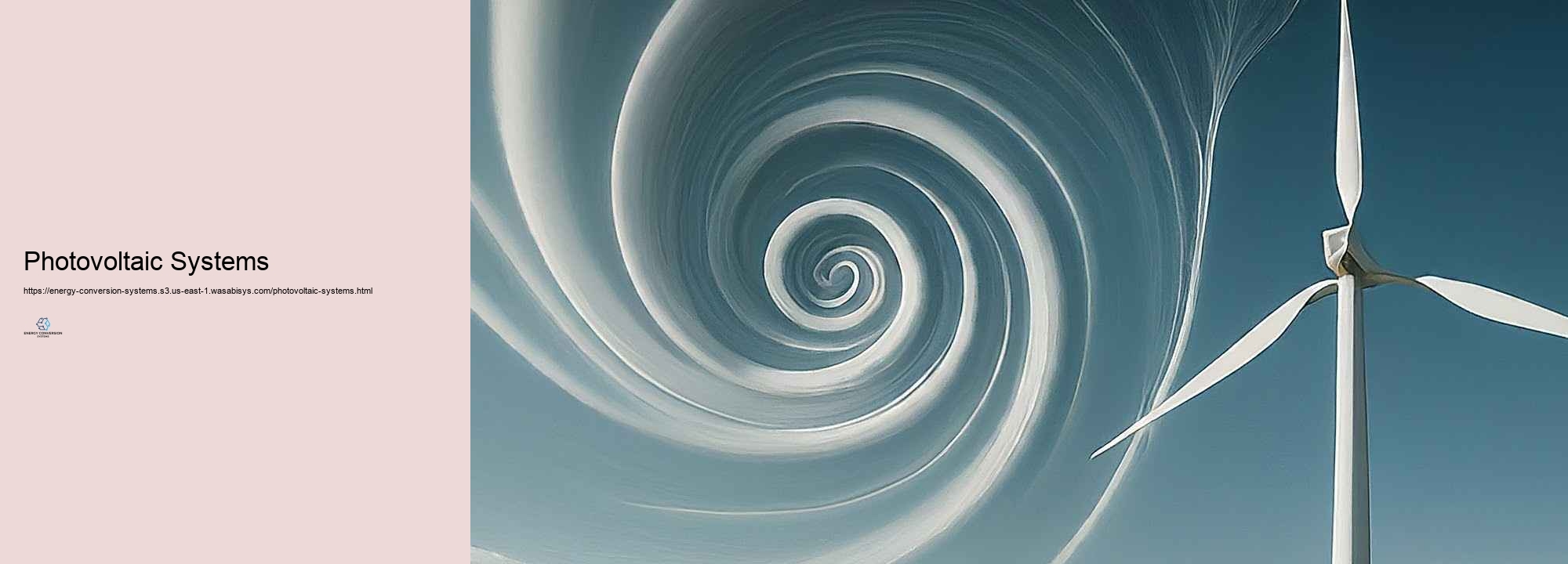
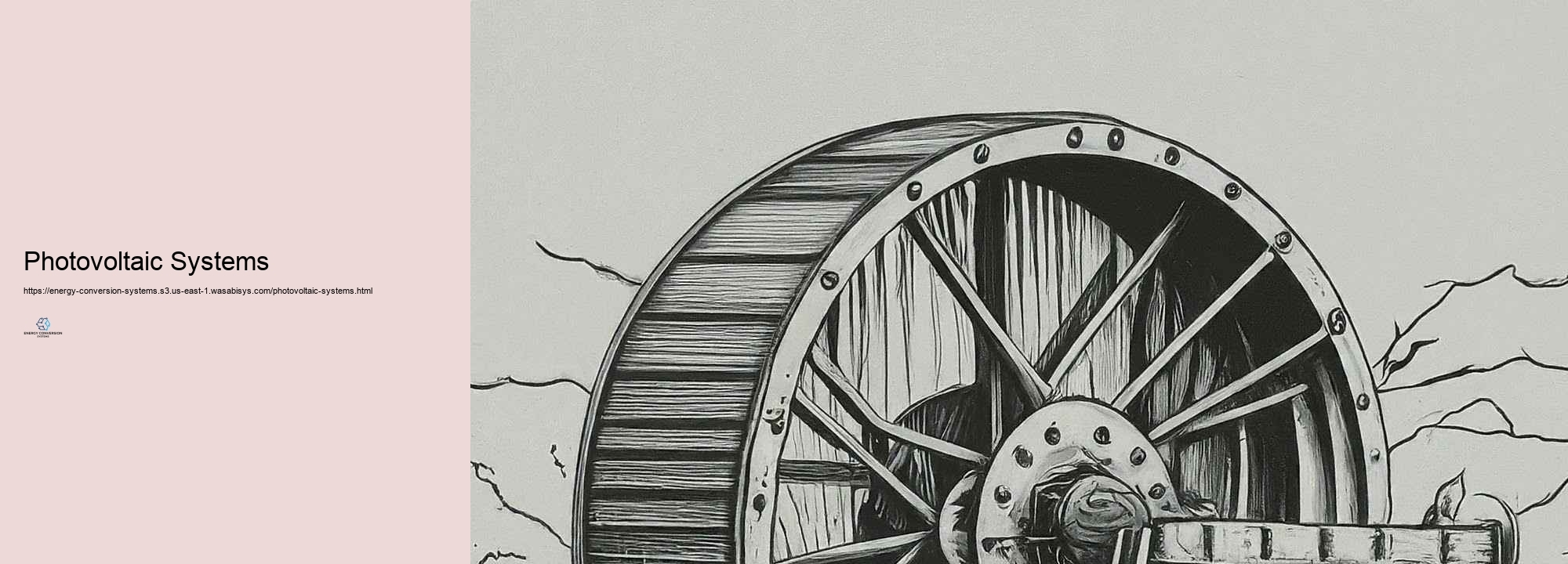
Energy conversion system layout is a detailed location that faces many obstacles in the quest for a lot more reliable, sustainable, and cost-effective solutions. As worldwide energy requirements stay to increase and ecological problems multiply, designers and researchers are delegated with establishing ingenious strategies to overcome these challenges. This evaluation checks out the important challenges in energy conversion system style and the arising remedies that are creating the future of energy innovation. Among the main troubles in energy conversion system layout is improving efficiency. All energy conversion processes include some degree of energy loss, as dictated by the regulations of thermodynamics. For thermal systems, such as nuclear power plant, this inefficiency is generally materialized as waste heat. Dealing with this challenge ask for a diverse method. Advanced materials that can take on greater temperatures and stress are being developed, permitting added reliable thermodynamic cycles. For example, supercritical and ultra-supercritical heavy steam cycles in coal-fired nuclear power plant can attain greater performances by running at incredibly heats up and stress. In inner combustion engines, innovations in burning chamber design, gas shot systems, and exhaust gas recirculation are pressing the boundaries of effectiveness. One more substantial challenge is the intermittency and irregularity of renewable resource sources. Solar and wind power, while neat and progressively cost-competitive, are not continuously supplied. This abnormality poses difficulties for grid safety and stability. Solutions to this obstacle consist of the development of advanced energy storage area systems, such as grid-scale batteries, pumped hydro storage, and emerging innovations like flow batteries. Moreover, the design of crossbreed systems that incorporate various energy resources (e.g., solar-thermal crossbreed plants) can help mitigate the intermittency trouble. Smart grid modern technologies and demand reaction systems are also being created to much better handle the stability between variable supply and requirement. Ecological influence is a vital variable to think about in energy conversion system layout. Lessening tires, particularly from fossil fuel-based systems, is a significant trouble. Solutions include the improvement of carbon capture and storage space (CCS) technologies, which objective to capture carbon dioxide wears down before they enter the environment. Advanced burning developments, such as oxy-fuel burning and chemical looping melting, are being checked out to facilitate a lot more efficient carbon capture. For renewable energy systems, difficulties consist of lowering the eco-friendly influence of producing procedures and dealing with concerns like wild pets defense in wind cattle ranch design. Scalability and cost-effectiveness existing recurring difficulties in energy conversion system design. Several encouraging technologies that job well in lab settings face troubles when scaled roughly service levels. As an example, gas cells have revealed remarkable possible for efficient energy conversion, nonetheless challenges in scaling up manufacturing and decreasing costs have limited their widespread cultivating. Solutions entail research study right into brand-new materials and manufacturing treatments to decrease expenses and improve toughness. Furthermore, modular design methods are being looked into to advertise less challenging scaling and personalization of energy systems. The combination of numerous energy conversion systems postures an additional significant obstacle. As the energy landscape winds up being far more diverse, with a mix of traditional and lasting resources, developing systems that can collaborate efficiently becomes critical. Solutions consist of the development of innovative control systems and power electronics that can take care of the ins and outs of incorporating numerous energy resources. Digital nuclear power plant concepts, which accumulation and coordinate dispersed energy sources, are emerging as a service to this combination obstacle. Item limitations existing continuous troubles in energy conversion system style. Countless innovative energy technologies require unusual or pricey items, which can limit their scalability and economic functionality. As an instance, some high-efficiency solar batteries rely on uncommon world facets. Solutions to this problem include research study right into different products, such as earth-abundant elements for solar cells, and the innovation of recycling technologies to recoup and recycle essential materials from decommissioned systems. Thermal administration is a vital problem in numerous energy conversion systems. Efficient cooling is essential for keeping performance and sturdiness, especially in high-temperature applications like gas turbines or concentrated solar energy systems. Solutions contain ingenious cooling down technologies, such as closed-loop hefty vapor cooling for gas wind generator blades, and the development of brand-new products with far better heat-resistant structures. In electronic systems, innovations in warm sink style and utilizing phase-change items for thermal keeping an eye on are being looked into. Energy storage space remains to be a significant obstacle, especially for applications requiring high energy thickness or fast charge/discharge cycles. While lithium-ion batteries have actually seen substantial renovations, they still face constraints in energy density and cycle life. Solutions being checked out consist of the advancement of solid-state batteries, which warranty greater energy thickness and improved safety, and study into one-of-a-kind chemistries like lithium-sulfur or lithium-air batteries. For grid-scale storage space, circulation batteries and sophisticated mechanical storage space systems (like compressed air energy storage space) are being produced. The difficulty of system dependability and maintenance is vital, especially as energy systems come to be a whole lot more complex and distributed. Ensuring lasting stability while minimizing upkeep needs is important for the monetary usefulness of energy conversion systems. Solutions contain the advancement of ingenious keeping an eye on and analysis systems, usually leveraging artificial intelligence and artificial intelligence solutions to expect and quit failings. The concept of self-healing systems, which can immediately spot and solve minor issues, is additionally being discovered. Versatility in energy conversion systems is winding up being significantly critical as energy grids breakthrough. Systems need to be able to respond rapidly to changes popular and supply, especially with the increasing infiltration of variable renewable resource resources. Solutions consist of the advancement of much more flexible thermal nuclear reactor that can increase and down swiftly, utilizing energy storage space systems to offer grid solutions, and the application of need response contemporary technologies that can adjustment energy usage based upon grid troubles. The field of energy conversion system style encounters numerous obstacles in the pursuit of extra reputable, lasting, and reliable energy options. Nevertheless, these obstacles are driving innovation across a wide variety of innovations and methods. From advanced products and special system establishes to the adaptation of electronic innovations and clever control systems, the services being created are not just resolving existing difficulties yet also leading the way for the future generation of energy conversion systems. As {research and development proceed, these solutions assurance to improve the international energy landscape, moving us in the direction of a a lot more lasting and efficient energy future.
The influence of energy conversion systems on eco-friendly sustainability is considerable and diverse, influencing everything from greenhouse gas discharges and source deficiency to setting wellness and biodiversity.
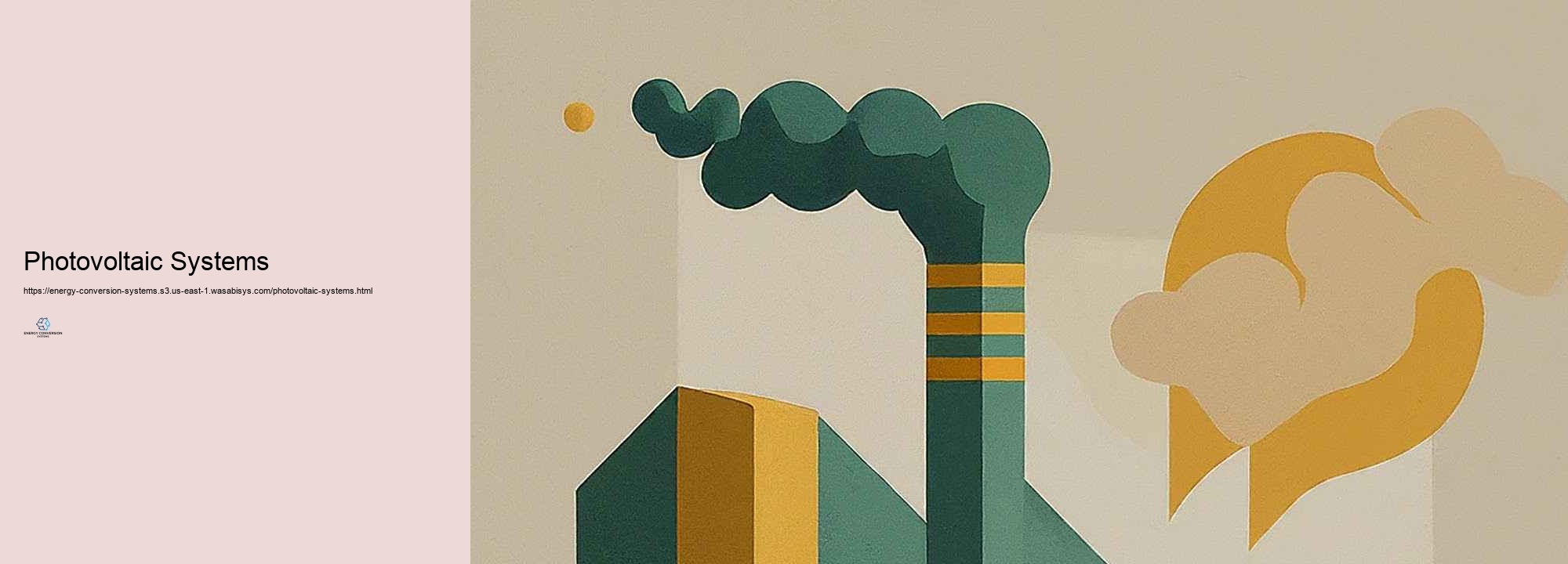
Energy conversion systems are technologies or processes that transform one form of energy into another, such as converting solar energy into electricity or mechanical energy into electrical energy.
Common types of energy conversion systems include solar photovoltaic panels, wind turbines, fuel cells, hydroelectric power systems, and geothermal energy converters.
Energy conversion systems improve efficiency by optimizing the process of converting energy from one form to another, reducing waste, and enhancing the overall output of usable energy.
Energy conversion systems are crucial in renewable energy as they enable the transformation of natural energy sources like sunlight, wind, and water into electricity, supporting sustainable power generation.
Challenges include optimizing efficiency, minimizing energy loss, integrating with existing grids, managing costs, and ensuring reliability and sustainability of the energy sources used.